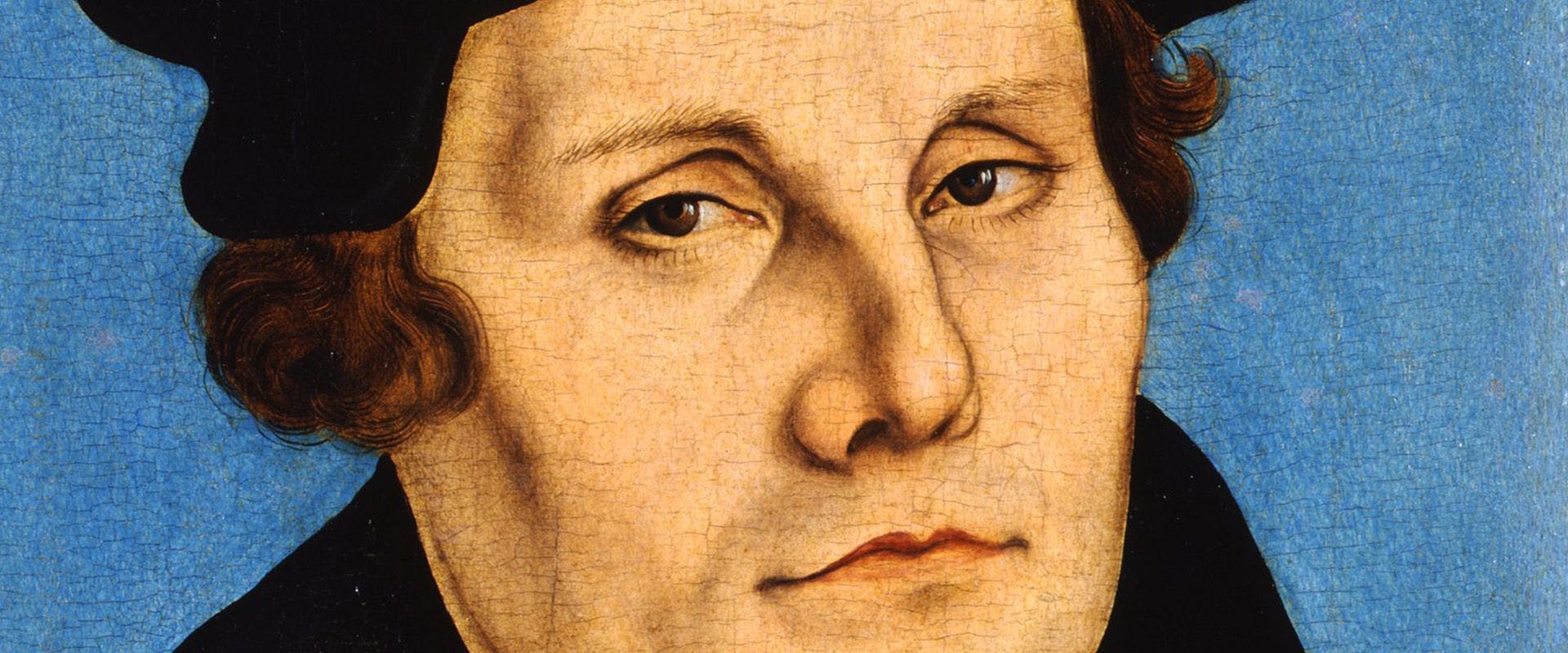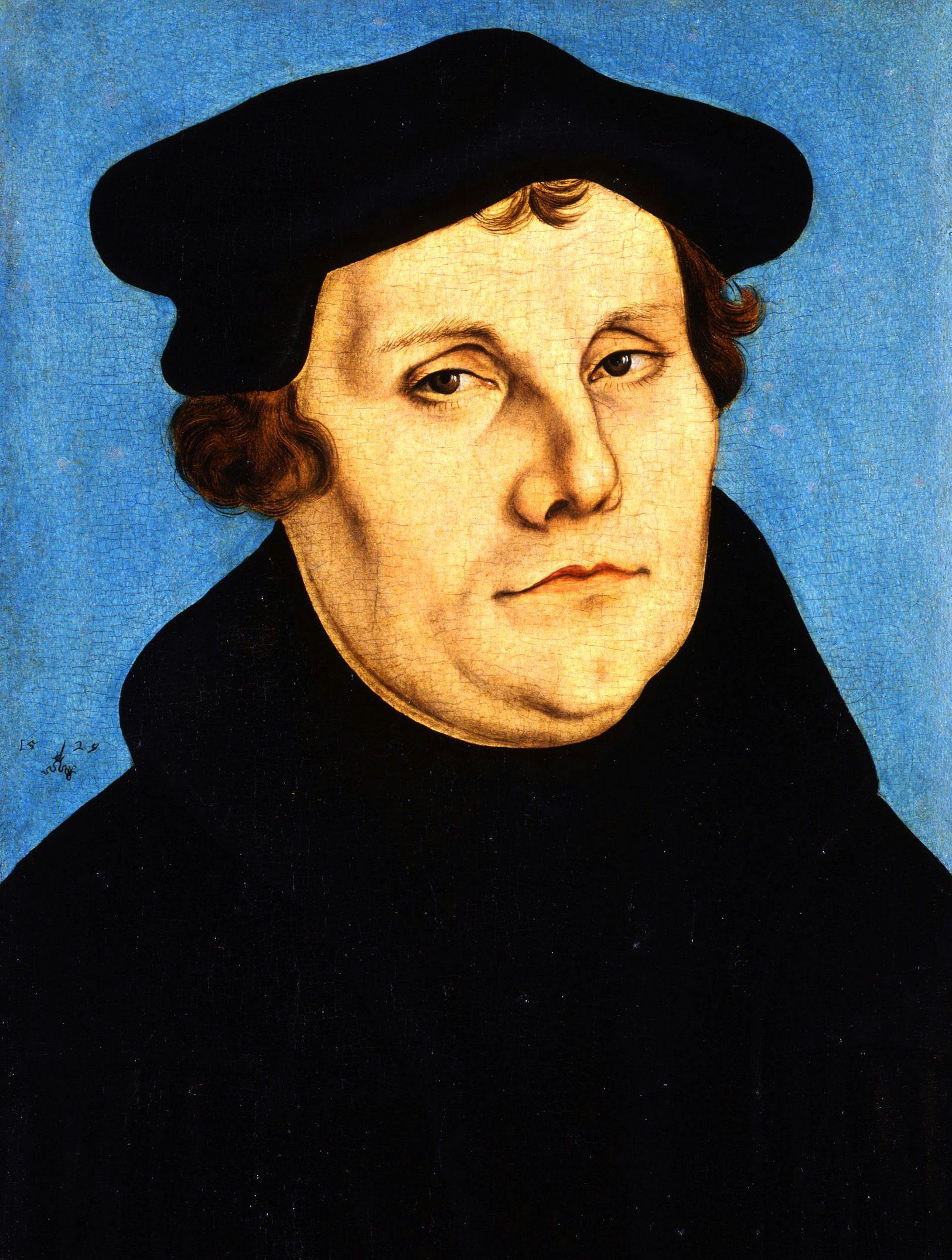Portraits of the Reformation. Luther and Cranach in the Medici Collections
To celebrate the 500th anniversary of the Protestant Reformation, the Uffizi hosts an exhibition comprising a precious group of paintings and engravings on reformed themes from the Medici collections.
Martin Luther pinned his ninety-five theses against the sale of indulgences and the authority of the pope to the door of the Schlosskirche in Wittemberg on 31 October 1517, thus paving the way for the Protestant Reformation.
To mark the 500th anniversary of this momentous event, the Uffizi hosts an exhibition in the Sala Detti, from 31 October to 7 January, comprising a precious group of paintings and engravings on Lutheran themes from the Medici collections.
The exhibits include the icons of the Reformed Church: portraits of Martin Luther and Philip Melanchthon, the two theologians who promoted the Protestant Reformation; portraits of Luther, an erstwhile Austin Friar, and of his wife Katharina von Bora, a former Cistercian nun; and of the brothers Frederick III the Wise and Johann the Steadfast, Electors of Saxony and political advocates and champions of the Reformation. All of these paintings were a product of the flourishing workshop of Lucas Cranach the Elder, the new religious tendency's official painter. The portraits are displayed alongside an old copy of a portrait of Luther, the Adam and Eve diptych that is Lucas Cranach's unquestioned masterpiece, and a Madonna and Child with the Young St. John the Baptist that testifies to his skill in depicting themes associated both with the new, Reformed and the traditional Catholic approaches to spirituality.
This centenary provides us with an opportunity to reflect on the unique concentration of such items in the Medici collections, undoubtedly due in part to the effectiveness of the Lutheran propaganda machine. Just as translations of the Bible – personally edited by Luther and his closest aides, who tailored them to cater for differing degrees of literacy to ensure their widespread dissemination – reflected a careful policy of language and image, so in the artistic field Lucas Cranach the Elder (Kronach 1472 – 1553 Weimar), a personal friend of Luther and court painter to the Elector Palatine Frederick III the Wise, created the works that were intended for circulation as manifestos of the new ideology. Thus the artist, a supporter of Luther and of his religious agenda, formulated the official iconography of the portraits of the movement's leaders, basing it on the utmost simplicity: Luther and Melanchthon, and Luther's wife Katharina von Bora, whose effigy with her husband as a couple testified to the abolition of celibacy for priests, were joined by the Electors Palatine Frederick III the Wise and his brother Johann I the Steadfast, they too having a role in the iconographic programme.
In the meantime, Cranach was also producing engravings of images designed to illustrate the religious texts of the Reformation, and even publishing a part of them himself. The exhibition hosts three series of engravings of the highest quality illustrating such religious themes as the Passion of Christ, the Apostles and the Martyrdom of the Apostles, alongside several individual prints. In the sphere of engraving, Cranach had no option but to take as his yardstick the genius of Dürer, in whose work he sought inspiration while nevertheless succeeding in crafting an original approach to his subjects. The exhibition hosts several important examples of this fruitful interaction between the two masters, particularly in connection with the theme of the Penitence of St. John Chrysostom and of Original Sin. Allegorical prints poking fun at the hierarchy of the Church of Rome, of which the Medici collections are of course totally devoid, are represented in the exhibition by a famous pamphlet composed by Luther and Melanchthon and illustrated by Cranach entitled Deüttung der zwu grewlichen figuren Bapstesels zu Rom vnnd Münchkalbs zu Freyberg in Meyssen funde, a genre whose success was to continue unabated for at least a century and which was to trigger a response equally as powerful and as biting from the Roman Church.
Also on display are portraits of figures from Florentine circles who were investigated for displaying an interest in the new religous theories: men such as Pietro Carnesecchi, portrayed by Domenico Puligo, and Bartolomeo Panciatichi, portrayed by Agnolo Bronzino. The climate in Florence in the 1540s, at a time when relations between Cosimo I and the Church of Pope Paul III Farnese were more strained than they had ever been before, was permeated with the new doctrines circulating among the city's intellectuals, men of letters, artists, court functionaries, bishops and academia. Cosimo defended these figures to the hilt, although not always successfully. Carnesecchi, for example, was beheaded and his body burned.
Returning to Cranach the Elder's Florentine paintings, the first mention of his work in the inventories of the Medici collections, citing his portraits of Luther and his wife, dates back to 1561. The portraits of the Electors of Saxony, on the other hand, formed part of the dowry which Vittoria della Rovere brought with her from Urbino, thus highglighting the dissemination of portraits of Reformation figures throughout the courts of Europe. Though hanging in a discreet position, the portraits of Luther and of Melanchthon enjoyed a moment of intense visibility in the Room of Painters in the apartments of Cardinal Leopoldo de' Medici, who separated them out in order to place them in rich Baroque frames. Thus these portraits continued to be part and parcel of the Medici collections despite the fact that the dynasty's public image was increasingly imbued with strong Catholic orthodoxy over the years.
As Eike Schmidt, the Director of the Gallerie degli Uffizi, has pointed out: "The exhibition that the Gallerie degli Uffizi is now holding testifies to the Medici's fantastically open-minded approach to the new theological trends, in an effort to document Europe's rich cultural variety, while at the same time highlighting the importance of artistic quality as a criterion underpinning Medici collecting, as we can see from Lucas Cranach the Elder's wooducts with verses from the Bible translated by Luther – the most precious woodcuts anywhere in the world. The exhibition has also provided us with the opportunity to conduct a major restoration campaign, including two superb 17th century frames attributed to Vittorio Crosten, published in the catalogue. All of Cranach's engravings on display have been restored by Maurizio Boni and Luciano Mori, restoreres with the Uffizi's Gabinetto dei Disegni e delle Stampe".
The exhibition is curated – and the catalogue, published by Giunti, is edited – by Francesca de Luca and Giovanni Maria Fara and promoted by the Ministero dei beni e delle attività culturali e del turismo, the Gallerie degli Uffizi and Firenze Musei.

